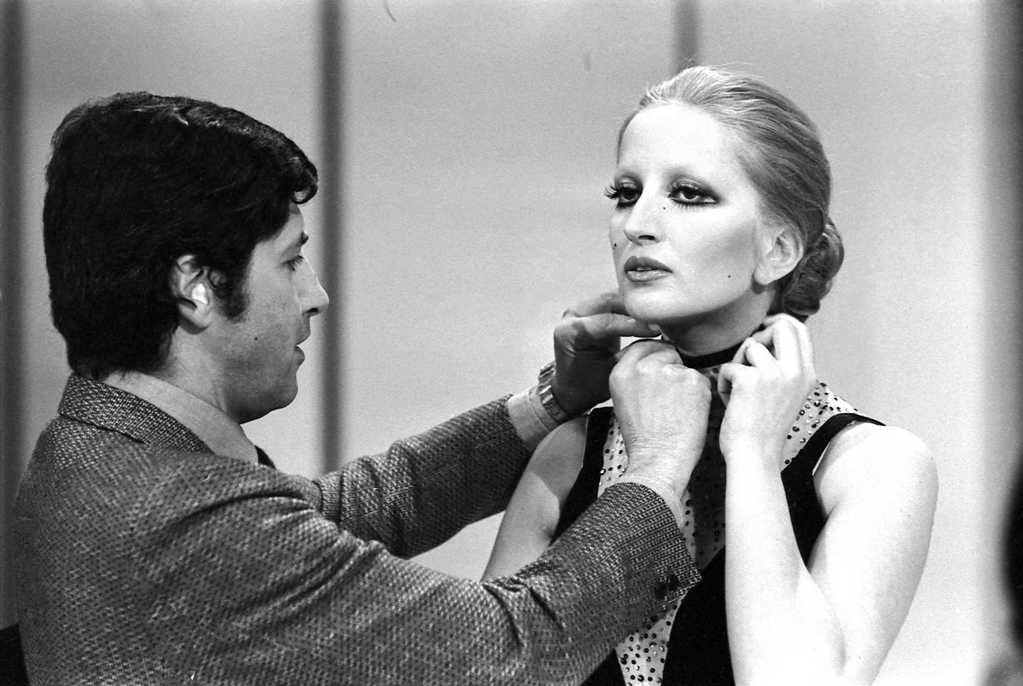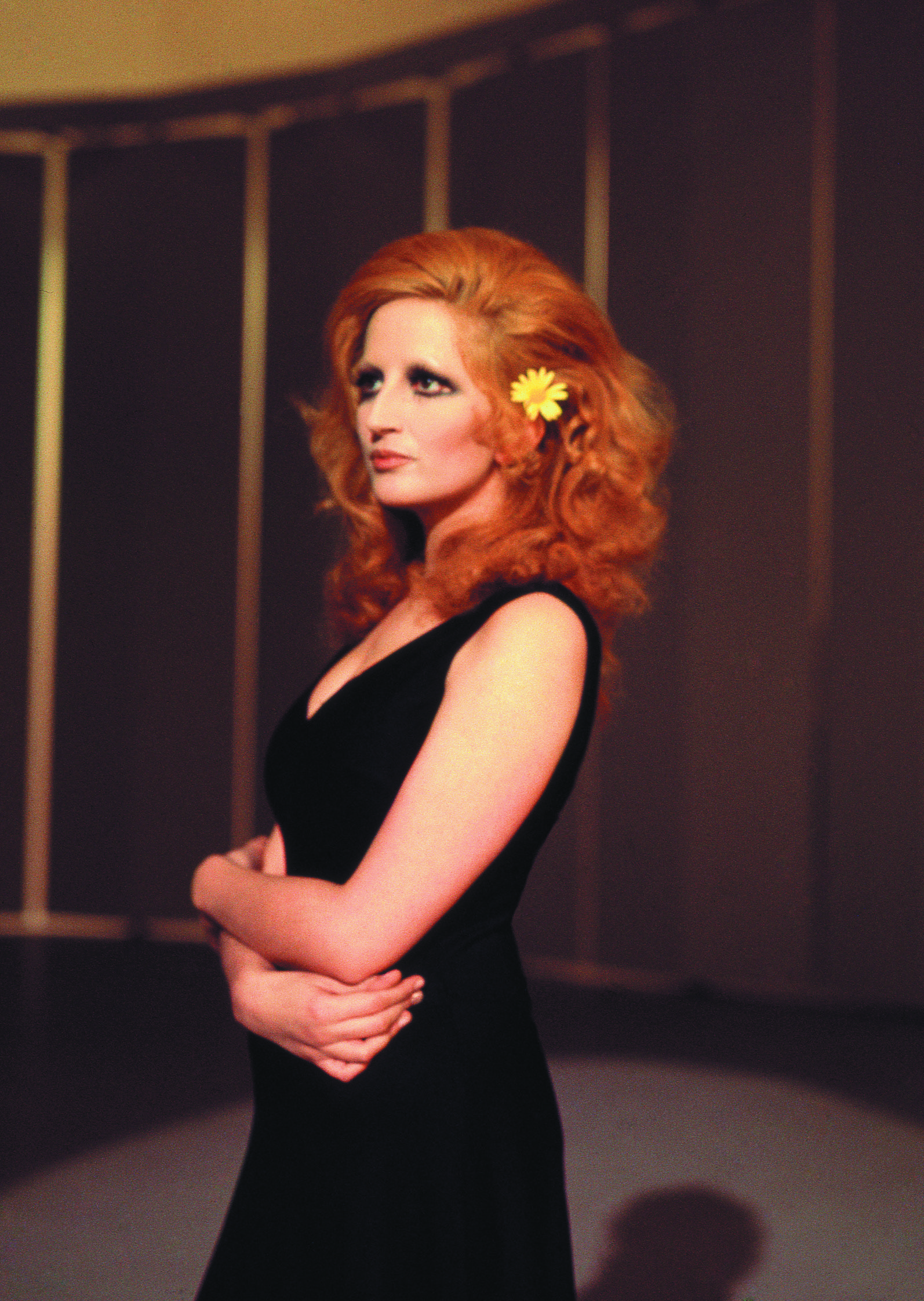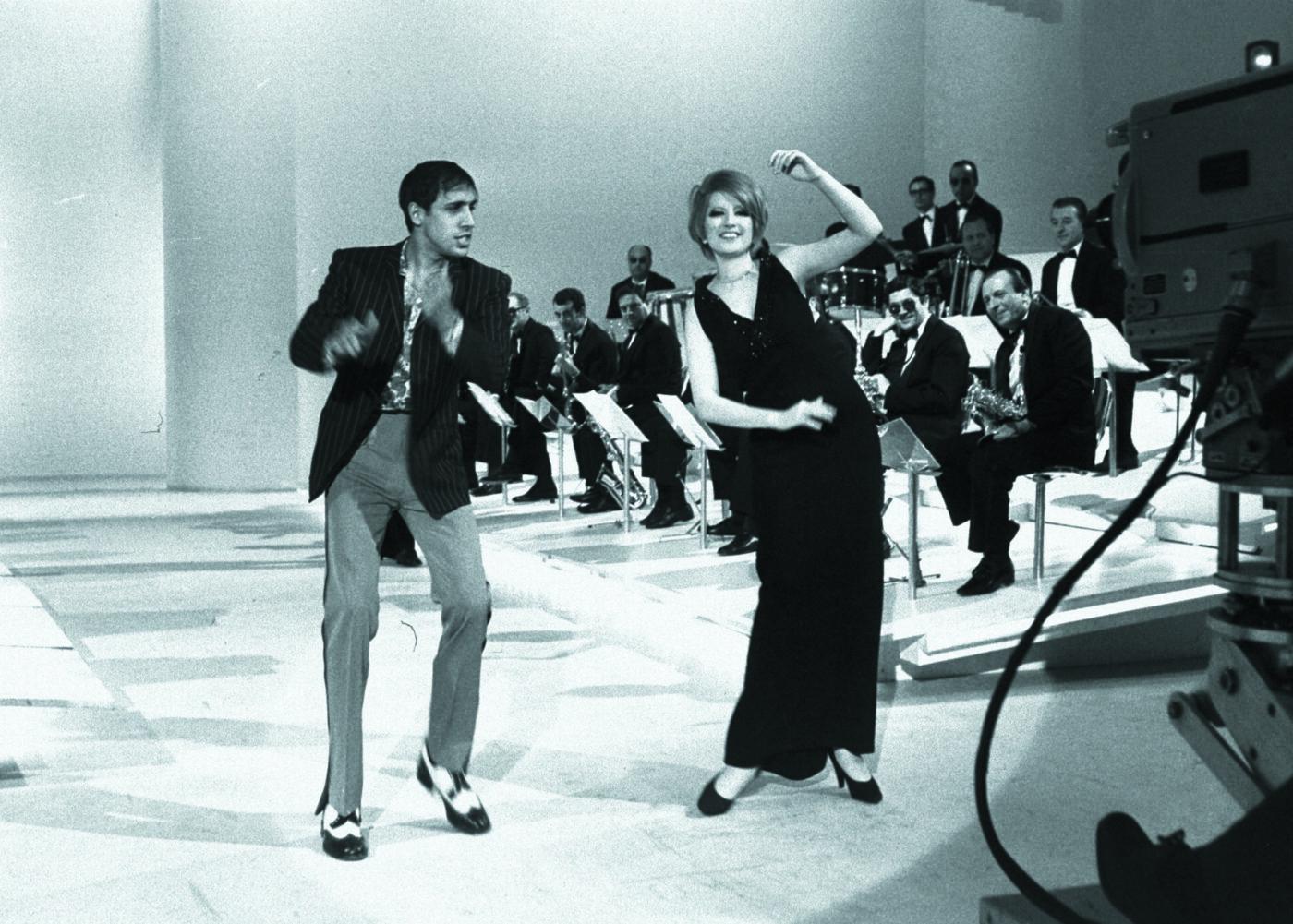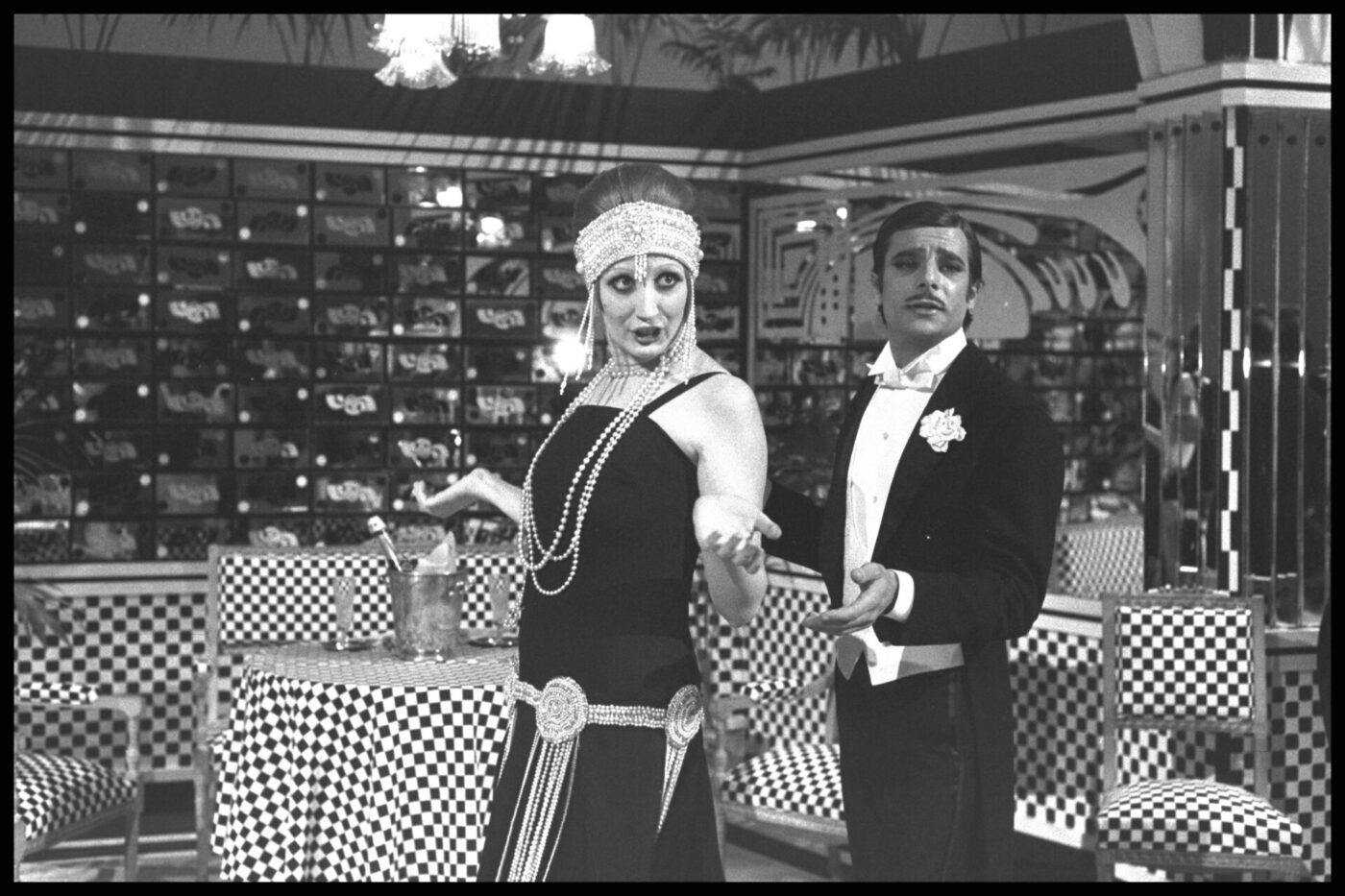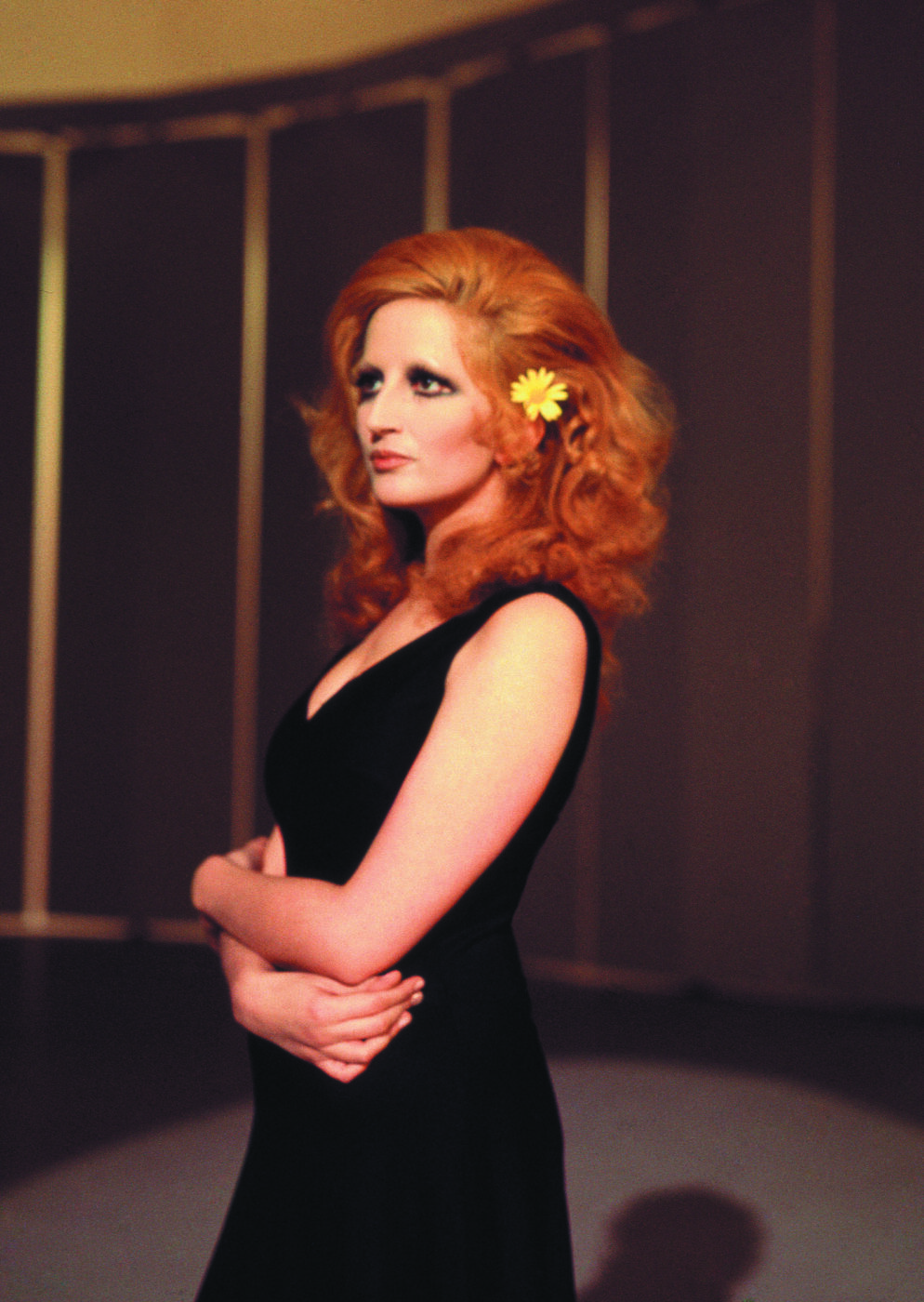In a buzzing Roman house, a group of youngsters dance and play music with abandon. It is the summer of 1960, and Italy is experiencing a period of rapid economic expansion that will go down in history as the Italian Economic Miracle. World War II is still a recent memory for many, but the generation born in the late 1940s and early ‘50s is eager to have fun and focus on the future. In this hot Roman summer, a short-haired girl moves energetically to the beat of rock and roll while a band dressed in jersey shirts and blue jeans plays wildly behind her. The camera can’t help but focus on this rising star of musica leggera, drawn not only by her exceptional vocal talent, but also by her magnetic presence. Her name is Mina, the film is Urlatori alla Sbarra (Howlers of the Dock) by the then-young director Lucio Fulci, and she is stylish, independent, and, above all, a leader. Alongside the renowned Adriano Celentano, she embodies a new approach to music–that of the “urlatori“, young rockers inspired by American blues and rock ‘n’ roll.
Just as certain ideas seem to hover in time and space, waiting for the right cultural moment to be fully understood, there are also individuals who come to embody the spirit of an era. Mina has been precisely that. No one else in Italy’s history has so powerfully personified a transformation as profound as the one that took place in the 1960s.
This is the story of Mina, the greatest singer Italy has ever known and one of the most beautiful voices in the world.
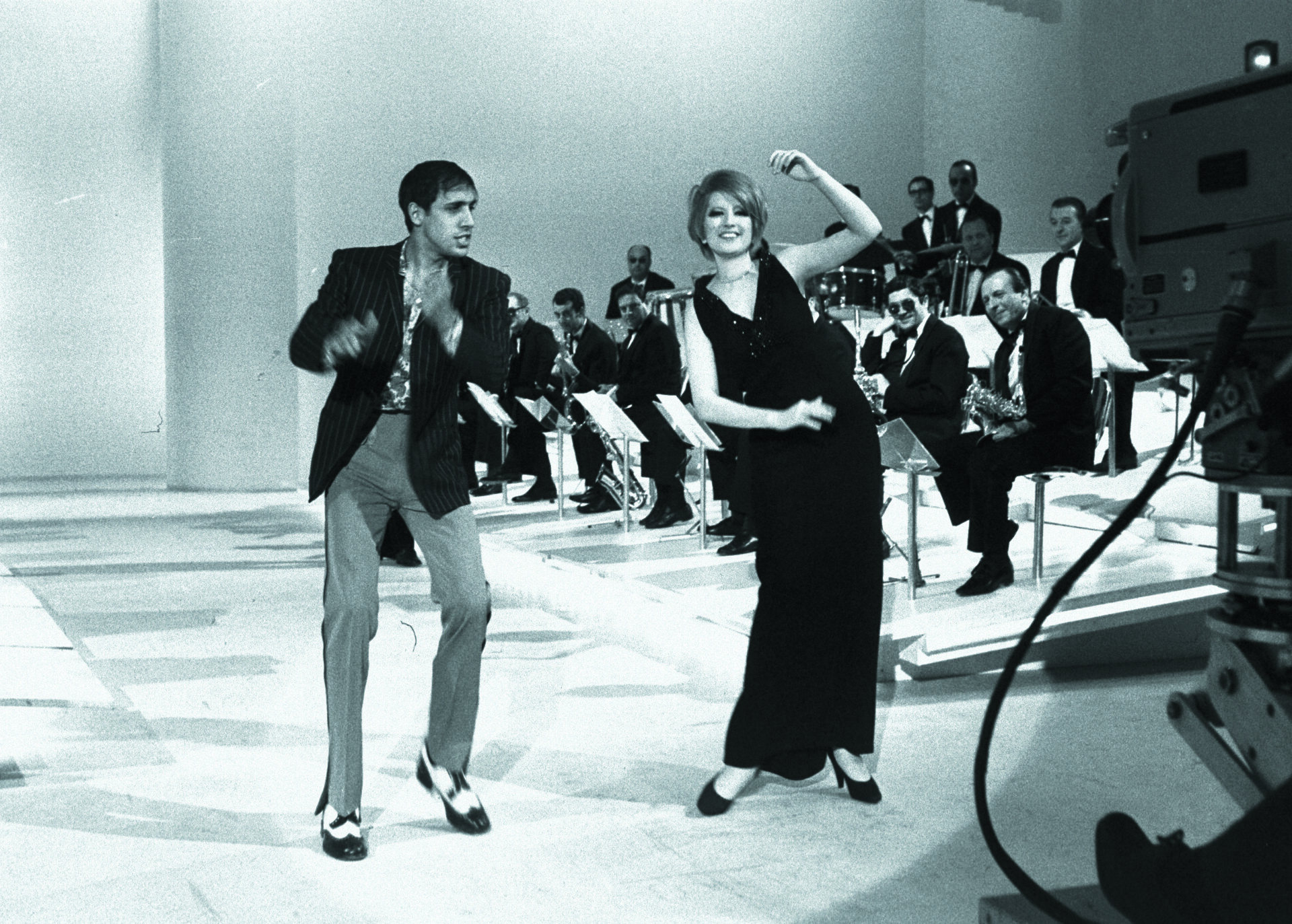
Mina at Studio Uno with Adriano Celentano; Courtesy of Archivio RAI
THE EARLY YEARS
Mina (a name meaning “mine” in English) burst onto the scene in the late 1950s and early 1960s, a decade of irreversible transformation for Italy, fueled by renewed confidence in the future and the economic boom supported by the Marshall Plan. After a conventional bourgeois upbringing in Lombardy, where she studied piano and opera, Mina’s journey to stardom began one evening in 1958 at the Buscadero dance hall in Cremona. That night, she took the stage with a group of friends, the Happy Boys—which also included her brother Alfredo, known by the nickname Geronimo. She delivered “Un’anima tra le mani” with stunning vocal power and range, captivating the audience—among them, Italdisc producer Davide Matalon, who instantly offered her a recording contract.
She quickly became the symbol of a new way of singing, dancing, and self expression. On March 1st, 1959, the “Tigress of Cremona” (as she would later be nicknamed) appeared on television screens across Italy for the first time. From the very beginning, Mina exuded remarkable self-assurance, using her body and voice in revolutionary ways. Much like Elvis Presley in the United States, she moved freely, expressed joy, gestured animatedly, emoted with her facial expressions, and gave voice to a generation eager to break free from the conservative past of their parents.
Between the late 1950s and mid-1960s, Mina’s singles-driven albums catapulted her to international stardom. Songs like “Tintarella di Luna”, “Una Zebra a Pois”, “Eclisse Twist”, and “Renato” became the defining soundtrack of sun-soaked summers on the Italian Riviera, where young dreamers sipped Campari sodas, zipped along on Vespas, and fell in love against the backdrop of the Versilian coast. Her music not only dominated the Italian charts—“Il Cielo in una Stanza”, written by Gino Paoli and first released as Mina’s interpretation, sold two million copies in 1960 alone, spending 21 weeks in the chart between the 1st and the 5th positions—but also gained widespread international recognition. With at least five number one hits between 1960 and 1961, Mina had, by the age of 21, conquered not just Italy but the entire world. Her electrifying performances took her from Japan to Brazil, and her songs, later translated and recorded in multiple languages, cemented her global appeal. And this was just the tip of the iceberg: Mina would go on to sell over 150 million albums worldwide, making her the best-selling Italian singer globally, with at least 1,500 songs recorded.
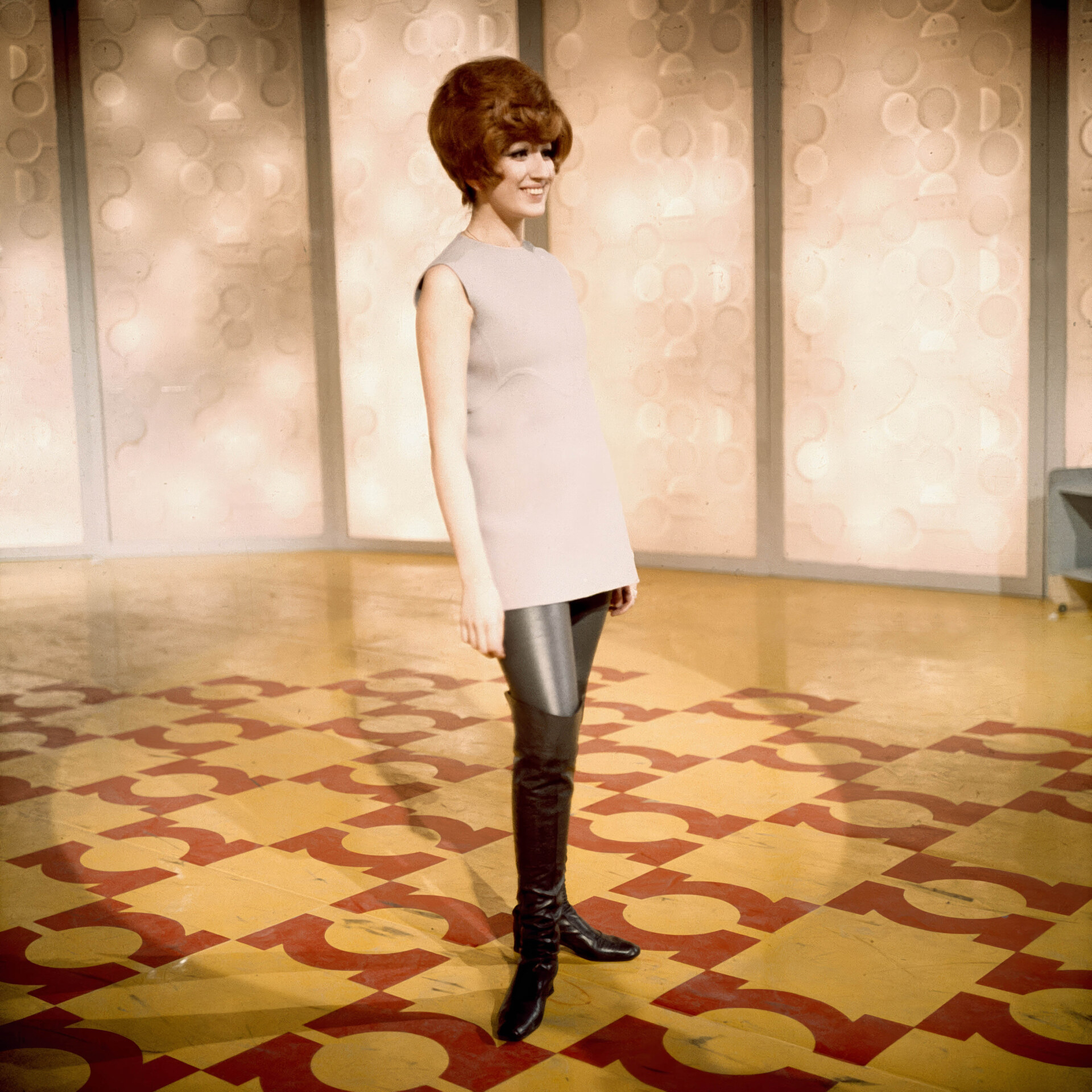
A young Mina’s initial debut on RAI; Courtesy of Archivio RAI
FROM TV SUCCESS TO NATIONAL CENSORSHIP
Following a brief appearance at the Sanremo Festival in 1961, Mina transitioned to television with the program Studio 1, the massively influential variety show, broadcast on RAI 1, that blended various acts, comedic sketches, and musical performances. As many families were acquiring televisions through installment plans—yet another symbol of Italy’s modernization—Mina entered the homes of Italian families, connecting with both the youth and the broader, orthodox public.
The show marked a significant milestone in European television history by featuring Mina as its lead presenter—a pioneering role for a woman at that time. Her performances seamlessly blended jazzy, Broadway-inspired numbers with traditional Italian classics, exemplifying the fusion of post-World War II American musical influences with Italy’s bel canto tradition. Throughout the show’s run, she was joined by esteemed male guests, including luminaries such as Marcello Mastroianni, Nino Manfredi, Vittorio De Sica, and Alberto Sordi.
It was also during these television years (1961-1966) that Mina came to represent a new idea of female emancipation. In songs like “Io sono quel che sono” and “Io Amo Tu Ami”, she sang freely about love, womanhood, relationships, and sexuality, giving voice to desires and emotions that had long been silenced and inspiring a generation of women to see themselves differently.
As Mina’s star skyrocketed, her offstage life fueled her image as a defiant trailblazer, with tabloids at her heels 24/7. In 1963, she had a son with actor Corrado Pani—who was still married—triggering a scandal that clashed head-on with conservative, Catholic Italy. At just 22, she became a single mother—a “ragazza madre”—and was swiftly blacklisted from television, RAI pulling her off the stage and thrusting into the heart of national outrage. But her fans stood by her, and she continued to release hits like “Un anno d’amore”, “E Se Domani”, “Non Illuderti” (a personal favorite), and “È L’Uomo Per Me”. The public’s devotion outlasted the scandal, and before long, the gates of censorship gave way.
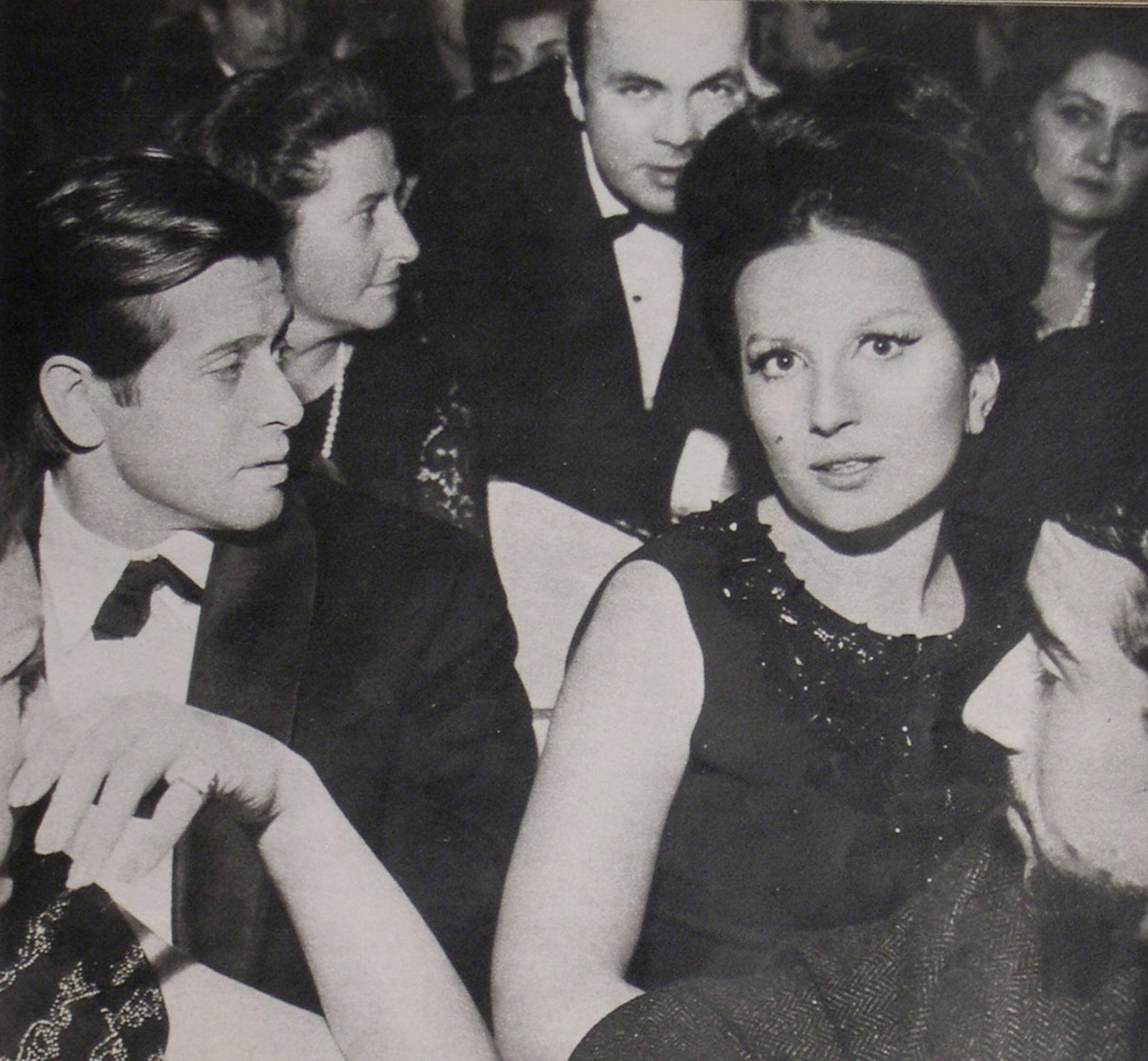
Mina with Corrado Pani
THE RETURN TO RAI
Mina’s eyes are framed by dark, austere makeup, her hair elegantly gathered atop her head. She almost resembles an odalisque as she gazes into the camera, singing “Città Vuota”—her reinterpretation of Gene McDaniels’s 1960 soul classic. The same girl who, in 1958, danced wildly to rock ‘n’ roll before the camera is now a woman, delivering a love song steeped in passion and sorrow. Likewise, the Italy that, at the end of the ’50s, was brimming with youthful optimism and hope for a brighter future had matured into a more serious, complex Republic. The innocence of its postwar rebirth was fading, giving way to the tensions and transformations that would soon erupt—1968 and the Years of Lead were just around the corner.
In just seven years, her life had transformed. Discovered by chance, she had risen to national stardom before becoming an international sensation. She starred in films, hosted television shows, and became a mother. Then, in 1965, after being banned by RAI in 1963, Mina made a triumphant return to the Studio 1 stage. That year, thanks to performances of the likes of “Brava” and “Se Piangi, Se Ridi”, she reasserts herself as an irreplaceable part of Italy’s cultural fabric.
But, this time around, Mina’s impact wasn’t confined to music. Her magnetic presence made her a natural in advertising, where she became the face of iconic Barilla pasta commercials, directed by Piero Gherardi and which aired during the popular TV program Carosello. Filmed in unconventional locations like the roof of Naples’ train station and unfinished buildings, Mina donned elaborate costumes while performing songs such as “Ta-ra-ta-ta” and “Se telefonando“.
With the release of the latter in 1966—arguably the most important Italian song of the postwar period—Mina was crowned the queen of a nation that had finally left its agrarian past behind and embraced modernity. The song, which tells of a fleeting love that ends as quickly as it begins, spoke directly to Italian women, suggesting that they could love, change their minds, and define their femininity on their own terms. It was a powerful message of autonomy and self-expression, sung by a woman who had spent the last 10 years fighting for her freedom.

Mina and Giancarlo Giannini; Courtesy of Archivio RAI
THE RETREAT FROM THE PUBLIC EYE AND PDU
Between the late 1960s and mid-’70s, Italy underwent another wave of significant sociopolitical change. The 1968 European upheavals energized the Italian feminist movement, led by figures like Carla Lonzi and Alma Sabatini, resulting in key victories such as the 1970 divorce law and the 1975 family law reform, which ended husbands’ legal dominance and decriminalized adultery. In this volcanic cultural landscape, musicians explored new styles—prog rock, free jazz, minimalist music–and the cantautori schools from Genova, Bologna, Rome, and Milan leant into this musical panorama.
Amidst this shifting cultural landscape, Mina, too, made moves. Tired of the relentless tabloid scrutiny, she chose to retreat from the public eye and relocate to Switzerland. In 1967, she founded her own music label, PDU (Platten Durcharbeitung Ultraphone), a platform not only for her own releases but also for emerging talents: most often, young and in some cases, experimental musicians. During this transformative period, as Italy’s cultural underground fostered a constellation of multi-genre artists, Mina navigated diverse musical styles too, collaborating with an extraordinary roster of musicians and composers, including Augusto Martelli, Dario Baldan Bembo, Pino Presti, Tullio De Piscopo, Carlo Pes, Mogol, Ennio Morricone, and Lucio Battisti.
With the latter, in 1972, Mina sang a duet–one of the most famous in Italian TV history–on the show Teatro 10. Battisti, shy and understated, sporting a hippie-like neck scarf, stood beside an exuberant, self-assured Mina—by then sporting her signature eyebrow-less look. Together, they performed a medley of Battisti’s hits, their synergy lighting up the screen and reaching millions of Italian living rooms. It would be Battisti’s last TV appearance. Their relationship will leave such a lasting impact that in 1975, Mina will pay tribute by releasing Minacantalucio, an entire album covering Battisti’s songs.
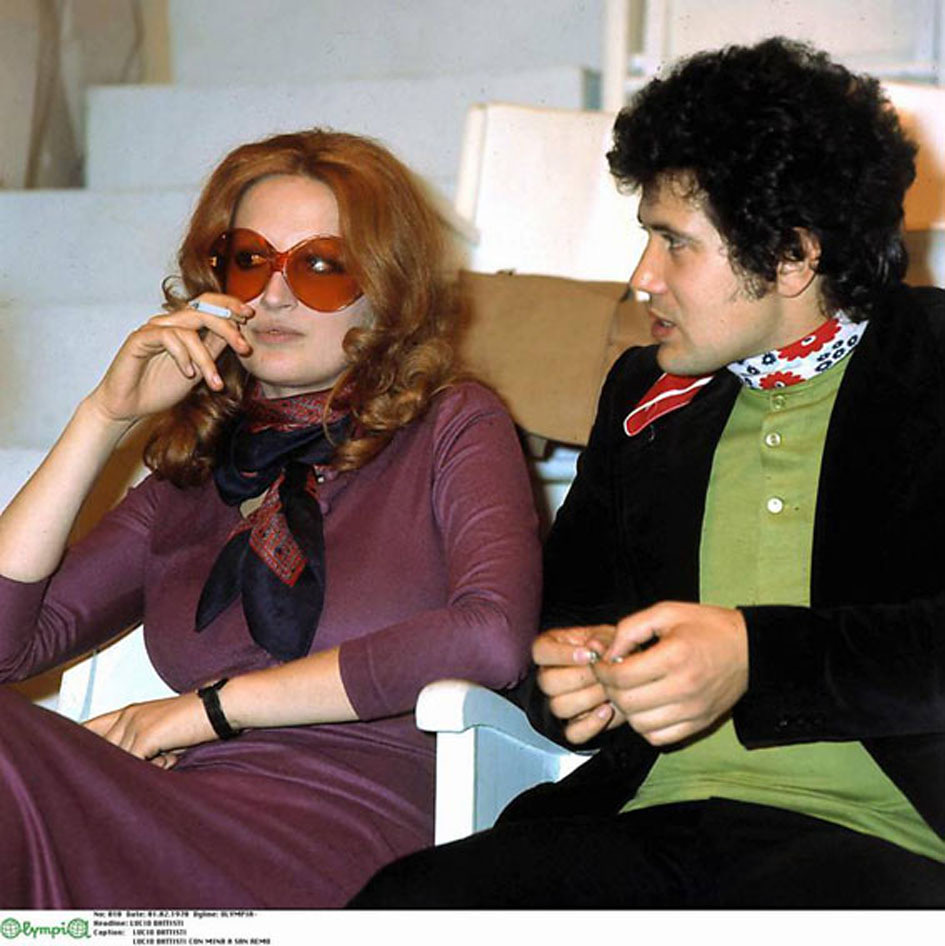
Mina and Lucio Battisti; Courtesy of Archivio RAI
GOODBYE WORLD
In 1972, Mina explored themes of flawed and deceitful men through “Amanti di Valore”, “Grande Grande Grande”, “Nuda”, and “Parole Parole”. Yet, as her fame continued to soar, her private life became increasingly suffocating, with paparazzi relentlessly invading her privacy. Her television appearances grew rare, culminating in her decision to retire entirely from the public eye in 1978, at the peak of her career, with her farewell song “Non Gioco Più”. By then, her lyrics had taken on a more disillusioned, melancholic tone. “La vita è un letto sfatto / Io prendo quel che trovo / E lascio quel che prendo dietro me / Non gioco più / Me ne vado.” (“Life is an unmade bed / I take what I find / And leave what I take behind me / I don’t play anymore / I’m leaving.”)
There was time for one more song, “Ancora, Ancora, Ancora” (1978), to bid farewell to the star system. Unlike the young girl who once gazed into the camera in the 1960s, Mina now commanded it with effortless confidence—sensual, self-assured, fully aware of her power, beauty, and sexuality. So much so that RAI once again turned to censorship, deeming the video too provocative. Years of gossip, harsh tabloid scrutiny, censorship from Christian Democrat Italy, and the weight of Catholic hypocrisy had gradually pushed Mina away, leading to a long goodbye—one that we are still witnessing.

Italiana (Mina) 1983; Ph. Mauro Balletti ©PDU
AN INVISIBLE PRESENCE
For two decades, Mina had been not only the voice of multiple generations but also a striking physical presence, moving effortlessly on camera, her expressive eyes captivating audiences as she danced to rock and roll, hosted television programs, starred in films, and filled the pages of magazines and newspapers. She was everywhere. And then, suddenly—she vanished. Poof!
Someone as profoundly physical as the Tigress of Cremona transformed, after 1978, into something purely ethereal. She became nothing but a voice—vibrations in the air.
This juxtaposition fueled some excellent music, from the funky rhythms of Attila (1979) to the experimental soundscapes of Kyrie (1980), followed by Salomè (1981) and singles like “Morirò per te”, published in the 1983 album Italiana (Mina)—in my humble opinion, her best ‘80s record. The album covers from this era reflect her constant reinvention: Mina transcends the role of a mere singer, becoming a shape-shifter. She conceals and reveals herself, playing with concepts, colors, and identities—one moment a bearded woman, the next an American football quarterback, then a Mona Lisa-like living work of art.
Between 1983 and 1986, Mina celebrated thirty years of RAI with three more albums before diving into a darker, more introspective phase. Rane Supreme (1987), Ridi Pagliaccio (1988), and Uiallalla (1989) embraced a nocturnal mood, marking a shift toward deeper, more reflective explorations in her music.

Mina at PDU recording studio ©PDU
EYES WITHOUT A FACE
Throughout the ‘90s and the ‘00s, Mina kept changing, shape-shifting, and innovating, releasing double records–usually one record of covers and the other with original songs. Albums like Ti Conosco Mascherina (1990), Caterpillar (1991), Sorelle Lumiere (1992), and Lochness (1993) showcase an artist at her most emotionally potent and self-assured. Though Mina constantly evolves in form and style, there’s an undeniable sense of identity—no matter how she reinvents herself, she never loses sight of who she is.
And albums kept on coming, almost every year: some to celebrate icons from the past, like the jazzy Mina Canta i Beatles (1993), the classic Mazzini Canta Battisti (1994), and Paradisco (Lucio Battisti Songbook) (2018); some in duets with old-school friends like Mina Celentano (1998) and Mina Fossati (2019).
More recently, Mina has collaborated with younger artists in production–such as Blanco, with whom she released “Un Briciolo di Allegria”–and has sounded fresh in albums like the excellent Facile (2009), Caramella (2010), Piccolino (2011), and the most recent Gassa D’Amante (2024), an elegant jazz record with some rock influences in which she sings about love, loss, and the passage of time. The aesthetic choice of the record–the cover, by Mauro Balletti, portrays Mina’s face as the figurehead of a ship in a misty, still sea–reminds me of Hearth of Darkness by Joseph Conrad, and just like the famous existentialist novella, Mina embarks on a metaphorical journey into the human soul. She delves into the deepest shadows of the mind and heart—nowhere more hauntingly than in “Il Cuore si Sbaglia”, in which she likens herself to a shattered mirror and a merciless mantis.
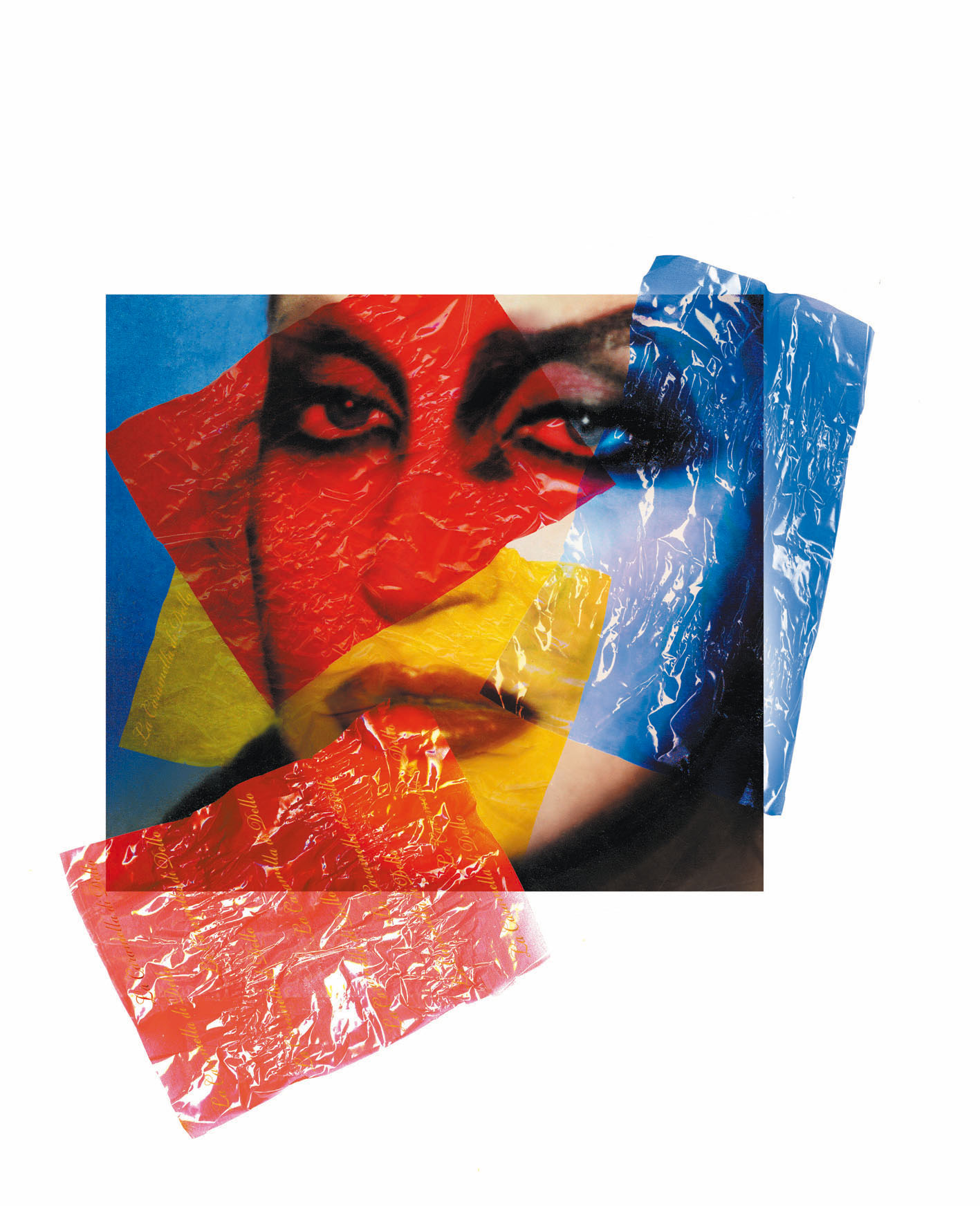
From that unforgettable night in 1958 to today, Mina has been the voice of Italy’s transformation, her sound resonating across decades of change. With unmatched vocal power, she became the soundtrack of a nation in motion—evolving yet anchored in a musical heritage. Italy is often called a land of saints, sailors, and poets, but singing is just as vital to its soul (just think of the balcony performances during the pandemic). In this tradition, Mina stands as the ultimate voice of the Bel Paese, an artist so extraordinary that even legends like Frank Sinatra, Sarah Vaughan, and Mick Jagger were in awe of her.
Like all great artists, Mina’s music is universal—it speaks to everyone. She has reached women and men, the young and the old, and, most impressively, multiple generations at once. She challenged deeply rooted Catholic taboos, reshaping how Italians think about sexuality, morality, and family. Just as her voice guided the youth of the 1960s, carried them through the turbulent 1970s, and matured alongside them in the 1980s and 1990s, Mina continues to inspire new generations—urging them to love fully, live boldly, and shave off their eyebrows if they damn well feel like it.

